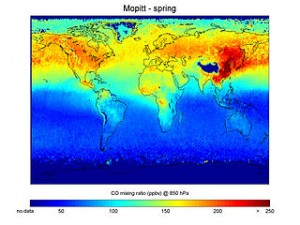
On Dec. 9, 2012, I posted: “To meet prescribed emissions-reduction targets, San Diego must get transportation plan right.” As I see it, 18 California regions in all including San Diego, are mandated by law to get this right in that each must step up to the plate greenhouse-gas-emissions-reduction-act-wise, particularly as it has to do with human-health impact. Moreover, in my view, successful Assembly Bill 32 (Global Warming Solutions Act of 2006) and Senate Bill 375 (Sustainable Communities and Climate Protection Act of 2008) follow-through will result in tremendous quality-of-life improvement for state residents whose numbers register in the tens of millions.
As it relates and that California Superior Court Judge Timothy Taylor ruled on Dec. 3, 2012 that a San Diego-area Regional Transportation Plan/Sustainable Communities Strategy (RTP/SCS) adopted and approved by the San Diego Association of Governments (SANDAG) in October 2011 violated state law, it stands to reason San Diego’s RTP/SCS will need updating – serious updating – so that state law is complied with in terms of the region meeting greenhouse-gas-emissions-reduction targets within a specified time frame.
“SANDAG must now conduct new environmental review for its 2050 plan to ensure it adequately addresses the risk of climate change. It is likely that the more rigorous environmental review will lead to a revised plan that does a better job of reducing greenhouse gas emissions, as required by state law,” TransitSanDiego in a news release stated on Dec. 4, 2012.
So what went wrong, and where?
“The adopted transportation plan,” continued TransitSanDiego, “front-loads the expansion and extension of freeways, thus inducing sprawl and reinforcing the region’s dependence on expensive, car-oriented transportation. Petitioners demonstrated that the SANDAG Plan’s heavy reliance on automobile transportation will lead to a regional per capita increase in greenhouse gas emissions that directly conflicts with state guidelines.”
Some may ask: what if there is little or moderate improvement only and the targets aren’t met? Or, perhaps more importantly, how can one be assured such laws will be properly enforced?
Painful past
I can’t help but be reminded of the following five catastrophic events of the past and, as listed in the California Environmental Protection Agency Air Resources Board (ARB) in its “Key Events in the History of Air Quality in California” listing, these are:
- 1930 – “Meuse Valley, Belgium air inversion results in 60 dead and thousands sick from exposure to industrial air emissions”
- 1943 – “First recognized episodes of smog occur in Los Angeles in the summer of 1943. Visibility is only three blocks and people suffer from smarting eyes, respiratory discomfort, nausea, and vomiting. The phenomenon is termed a ‘gas attack’ and blamed on a nearby butadiene plant. The situation does not improve when the plant is shut down”
- 1948 – “Donora, Pennsylvania air pollution episode kills 20 people, numerous animals and half of the town’s 12,000 residents became ill due to uncontrolled emissions from industrial facilities”
- 1952 – “Over 4,000 deaths attributed to ‘Killer Fog’ in London, England”
- 1956 – “‘Killer Fog’ enveloped London, England resulting in 1,000 deaths above normal”
Painful, though, these reminders may be, they must not only not be forgotten, they must also not be repeated.
And then there is this from The Guardian newspaper as reported by Gary Fuller:
“The 1956 Clean Air Act with its smokeless zones brought about great improvements in London’s air but not before smogs in 1956, 1957 and 1962 claimed around 1,500 more lives. With the widespread availability of natural gas, and closure of much of London’s industry and riverside power stations, the air in the capital is now very different. But the hazard from solid fuel burning has been replaced by new urban pollutants, mainly from diesel traffic. Today, London’s air pollution represents a health burden of around 4,300 deaths per year, a similar figure to those killed in the first days of the 1952 smog.”
‘Left speechless’
Not to try to minimize the work already done and progress made on the air-quality-improvement front, but conditions are still far from ideal.
And it is with respect to the account presented below that I’m left speechless.
“A centerpiece of the state legislation is the ‘cap-and-trade’ program, which began auctioning off carbon credits Wednesday,” Anne Gonzales of The Sacramento Bee wrote.
“Vice-Mayor Patrick Hume criticized the proposals, especially green building practices that exceed the state’s standards, and pre-wiring homes for electric vehicle charging stations.
“‘What we have before us is not the right course of action today, if ever,’ Hume said at Wednesday’s City Council meeting. ‘AB 32 is horrible legislation, and (its) carbon offset auction is a joke,’” Gonzales wrote in citing Hume.
Whether or not there will be consequences for cities not complying with the AB 32 state legislative mandate remains unclear at this time, Gonzales noted.
And, so I ask: on beating back emissions, if not now, then when?
Image above: NASA
– Alan Kandel